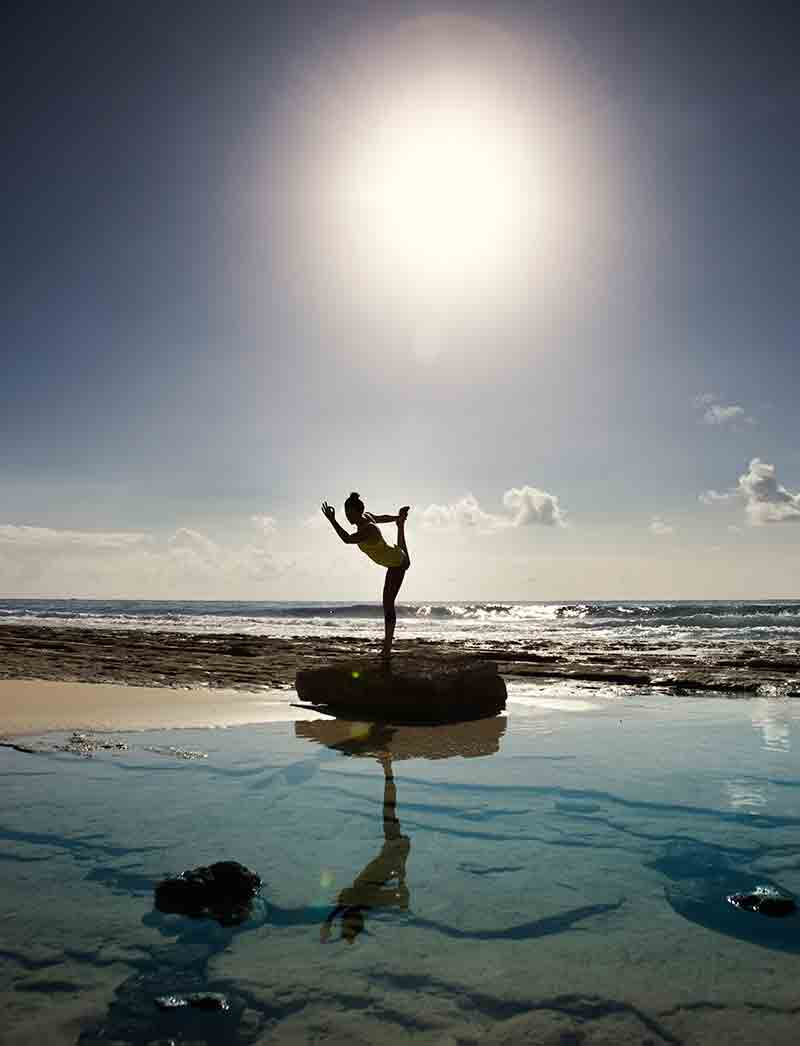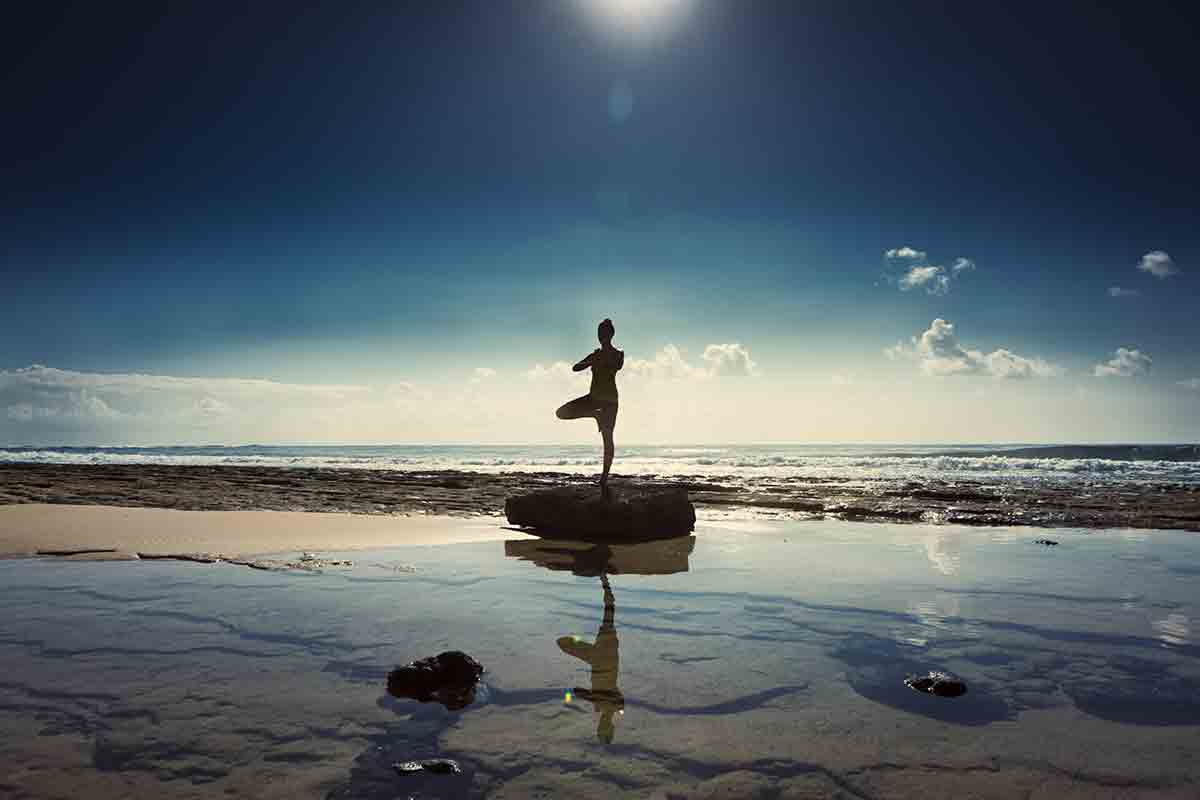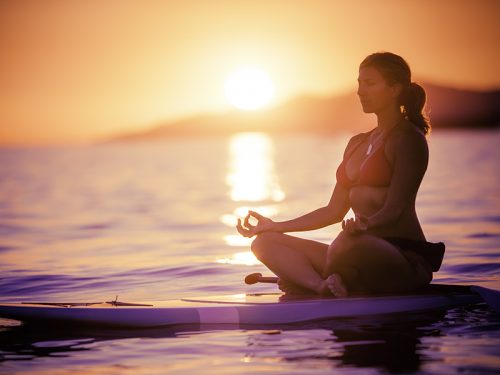Although Yin Yoga is a practice unknown to many in the Western world, this meditative form of yoga is praised as a wonderful way to look deep inside oneself while holding poses for extended periods of time. Not surprisingly, Yin Yoga centers on the Taoist concept of yin and yang in which opposite yet complementary forces are working in harmony in every experience.
Yin-Yang

Visually, the Yin-Yang symbol suggests that regardless of any given situation, we are able to stay balanced by keeping a tiny amount of space for one thing within its opposite. When speaking in terms of yoga, yin describes a passive practice, while yang characterizes the majority of popular hatha yoga practices which create heat in the body and actively engage the muscles.
The Postures in Yin Yoga
Postures in Yin Yoga are passive and done primarily on the floor or seated, in which you relax and soften the muscles as you hold the poses for long periods, usually 3 to 5 minutes with some up to 20 minutes. Unlike yang-like yoga practices which are typically more superficial and fast-paced to get the blood pumping, Yin provides a deeper access to the body as it helps regulate the flow of energy throughout it.
Time spent in yin yoga postures is similar to meditation, and the theory behind this approach is that keeping the muscles passive for certain lengths of time will gently stretch the connective tissue which becomes stiff and less mobile as we age, therefore improving one’s flexibility in as little as one class. With a focus on the lower back and hips (areas with an abundance of dense connective tissue), the long holds in Yin target the meridians that run through them. Similar to acupuncture, an experienced Yin specialist can create sequences to trigger the flow of chi through various energy channels to produce a balancing effect throughout the body.
Restorative yoga

Restorative Yin Yoga, with its numerous physical benefits, is a great complement to the yang-like yoga styles that are so common these days. The healing poses of Yin can be modified to work for anyone, regardless of age, strength, fitness or flexibility level, making it an ideal form of yoga to be practiced through all stages of life. In addition to its calming effects, Yin Yoga can help maintain or restore the natural range of motion in the joints. For anyone new to the practice, experts suggest a few classes to feel results; however, it is common for newcomers to reap immediate benefits such as a body that feels more relaxed, more opening in the hips and a sense of mental clarity and centeredness.
While the physical aspects of Yin Yoga are clearly beneficial, its positive impact on one’s emotional well-being make it even more impressive. It encourages students to become intimate with their current state of mind and body, raising their awareness of feelings, emotions and sensations that would be overlooked in faster types of yoga. It is frequently utilized in programs which address addictions, anxiety, eating disorders, trauma or deep pain because of its focus on inner reflection. It frees the mind by teaching one to truly sit still in their own truth and accept what is present at any given moment in their life.













